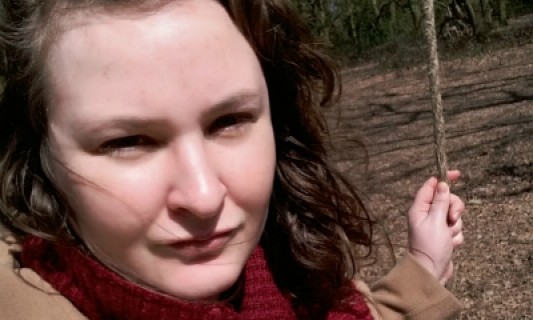Below are three poems from Emily Hasler’s debut collection The Built Environment, published this month by Pavilion Poetry. The Built Environment is being launched at the University of Liverpool on Thursday 26th April alongside new collections from fellow Pavilion poets Sarah Corbett and Alice Miller: event details here. Emily will be appearing at a number of readings in the coming weeks: details of the tour here.
The Built Environment
a waste and ownerless place
– Botolph
There is in this place as little as can be imagined, so things stand in for each other: metal turns to wood, wood to bone, ruins to wrack— in this already regretting wind, both scourge and the salt to heal it.
The air is most of the materials needed for the church and the best of the gutting fire. This creamy crag is a flushwork of creatures, late of the land. Moving mudstone is a tracery of bubbles forming, bursting, flat and still as water, thick and permanent as the first render— a thin layer that dries as it cracks.
Bernini’s Apollo and Daphne
A statue in the Villa Borghese, Rome
I fooled the sculptor—thinking he could catch my undying trick. How did I become a container and pour myself into it
at the same time? I flowed from marble, I flowed back into it. I’ll endure, perpetually tightening the tiny gimbals in each
foliated fingertip. Staying still is unceasing, always becoming: girl, god, stone, tree, sculptor. And these who come to stand, circle, stand—
do they know they have forgotten themselves a moment too long? Moments are large as villas, parks, mythologies, centuries of Art. Thoughts
run through me like a fountain, water in constant escape—which is no escape.
Inscription
Judith Eyre, ‘who died much lamented, in the 35th Year of her Age, in consequence of having accidentally swallow’d a Pin.’ What can we know of her life? Within: her organs greasy grey as filmed ponds, her blood taking the routes Harvey mapped. No thread to follow, only the needle—so perfectly made to make an opening, to find a way. And this is the only way—we dart in, so unlikely and then so definite. Led by our finest part, it is but narrowly we escape into our futures (though obvious the marks upon the past).
